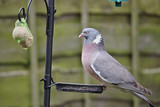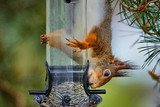UK's Most Colourful Birds
Colourful birds in the UK. When we think of colourful birds, we imagine tropical rainforests and exotic islands, but the UK is home to its own collection of bright and beautiful birds.
Here are five of Britain’s most colourful birds.






Kingfisher
With their iridescent blue and orange plumage, the kingfisher is a strikingly beautiful bird. Kingfisher’s nest in dug out tunnels hidden away in riverbanks along slow moving waterways. They seem to prefer to nest near low hanging willows. Though relatively common and widely spread they are an elusive bird, only venturing out in the open to dart into the water for fish. Kingfisher chicks usually hatch between March and April and need to be fed around 14 fish a day in order to thrive. Kingfishers will eat a variety of aquatic food and invertebrates, but their favourite meal is stickleback and minnow.
Spotting Kingfishers
The best way to spot a Kingfisher is to visit a spotting sight such as the ones listed below. Listen out for a high-pitched peep-peep call.- Attenborough Nature Reserve, Nottinghamshire (Nottinghamshire Wildlife Trust)
- Fowlmere, Cambridgeshire (RSPB)
- Lackford Lakes, Suffolk (Suffolk Wildlife Trust)
- London Wetland Centre (Wildfowl and Wetlands Trust)
- Mere Sands Wood, Lancashire (Lancashire Wildlife Trust)
- Wisley Gardens, Surrey (Royal Horticultural Society)
- Rye Meads, Hertfordshire (RSPB)
- Staveley Nature Reserve (Yorkshire Wildlife Trust)
- Strumpshaw Fen, Norfolk (RSPB)
- Tophill Low and Potteric Carr (Yorkshire Wildlife Trust)
Green Woodpecker
Green woodpeckers like to nest in the holes of deciduous trees. They have softer bills than their spotted cousins so if you hear a drumming sound in the branches it won’t be a Green Woodpecker. Green woodpeckers can take up to 30 days to build their nests which are so well made they can be used for up to 10 years. Although the RSBP estimates there are around 52,000 breeding pairs they are and elusive and solitary bird.
Spotting Green Woodpeckers
Although Green Woodpeckers can be hard to spot, they can be drawn to gardens. They naturally feed from the ground and can be tempted by dried mealworms and insect suet as their diet is primarily protein rich beetles, ants, grubs and caterpillars. Green Woodpeckers can be recognized by their distinctive “laughing” call. Listen out for it when walking in parklands or woodlands.Pheasant
Pheasants are a common sight along the verges of country lanes fields, woods, copses and hedgerows. The males can be recognized by their handsome rich red and green plumage. Pheasants were brought to British shores by Roman soldiers. They adapted well to our climate and were widely used for game. The population of the pheasant increased until around the 1700’s when woodlands were cleared for agriculture and many birds lost their nesting sights or were poached. Strict game laws saw their numbers increase again and they are a popular game bird to this day.
Spotting Pheasants
Pheasants make a high-pitched chirrup when disturbed or about to take flight. They often take refuge in wooded areas and will often attempt to “run” for cover first as their flight is rather ungainly. Common pheasants are fairly easy to spot but their more colourful cousin the Golden Pheasant is a rarer sight. These birds have bright golden plumage, are smaller in size and tend to roost in trees come nightfall. According to the RSPB the golden pheasant can be spotted all year round but is best sighted early in the morning, when it ventures from its woodland shelter and can be seen foraging in clearings.Bullfinch
There are an estimated 190,000 breeding pairs of Bullfinch in the UK. Pairs will often stay together over several seasons and raise two to three clutches of chicks per year.
Spotting Bullfinch
Colourful birds in the UK. Bullfinch are relatively rare garden visitors though they can be attracted by seed feeders as seeds from plants and trees such as ash, elm and nettle make up most of their diet. Come spring, some gardeners consider them pests as they will happily munch their way through blossoming fruit trees. However, their bold red plumage and black caps are a welcome sight in the garden. You are much more likely to see a bullfinch than to hear one, however as their call is very soft and fading, repetitive, monotone whistle.Yellowhammer
The yellow hammer is actually a large type of bunting. Male birds have vivid yellow plumage and a distinctive forked tail. Their colouring becomes more subtle during the winter months where they hideout in hedgerows and woodland copses near farmland.
Spotting Yellowhammers
Yellowhammers are easiest to spot in open fields where they feed on grass and cereal seeds. When food becomes scarce during winter months they do, occasionally venture into rural back gardens in search of a snack. They happily feed on finch mix from ground feeders. Yellowhammers have a sweet, melodious call.Parakeet
Although, not native to the UK flocks of tropical birds have become a more common sight throughout the UK. These birds often make urban and suburban parks their home after escaping from captivity after being bought as pets. They breed prolifically and seem completely unconcerned by the harsh British winters. The most common type of Parakeet living wild in the UK is the Ring-tailed Parakeet.
Spotting Parakeets
Parakeets have been spotted in Britain since the 19th century. The first sightings were in Norfolk, but they have since spread to London and are mainly seen in the southeast of the country.31st Mar 2020
Explore Popular Articles
-
8 Easy Ways to Attract Woodpeckers to Your Garden
8th Apr 2024Woodpeckers are among the most interesting birds known for their drumming sound and bright colours.
-
How to Protect Your Bird Feeders from Pigeons ?
28th Mar 2024You must have noticed damaged feeding ports, hanging mechanisms, perches, lids and bottoms. Who coul
-
5 Foolproof Ways to Rat-Proof Your Bird Feeder
18th Mar 2024Building a bird-friendly environment is a delightful endeavour, but it involves the responsibility o




